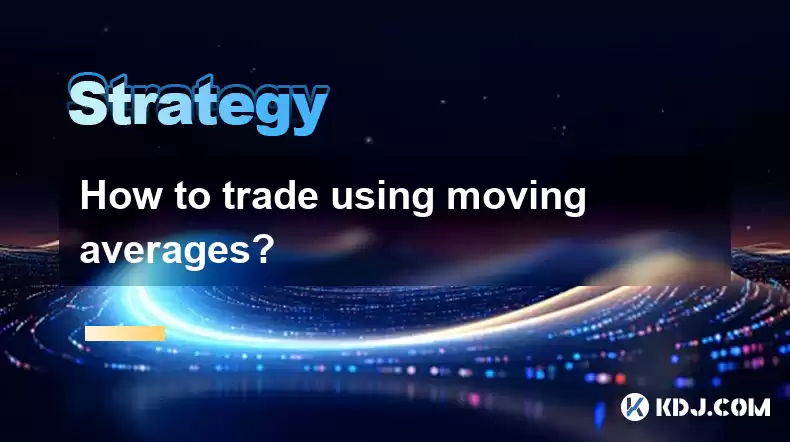-
 Bitcoin
Bitcoin $119900
1.12% -
 Ethereum
Ethereum $4599
9.32% -
 XRP
XRP $3.282
4.63% -
 Tether USDt
Tether USDt $0.9998
-0.02% -
 BNB
BNB $833.4
3.91% -
 Solana
Solana $193.3
10.47% -
 USDC
USDC $0.9999
-0.01% -
 Dogecoin
Dogecoin $0.2366
5.64% -
 TRON
TRON $0.3534
2.64% -
 Cardano
Cardano $0.8477
9.54% -
 Chainlink
Chainlink $23.33
10.42% -
 Hyperliquid
Hyperliquid $45.59
5.29% -
 Stellar
Stellar $0.4509
5.00% -
 Sui
Sui $3.888
6.46% -
 Bitcoin Cash
Bitcoin Cash $620.4
7.20% -
 Hedera
Hedera $0.2613
6.53% -
 Ethena USDe
Ethena USDe $1.001
0.01% -
 Avalanche
Avalanche $24.75
8.33% -
 Litecoin
Litecoin $130.2
8.10% -
 Toncoin
Toncoin $3.541
5.12% -
 UNUS SED LEO
UNUS SED LEO $9.079
1.11% -
 Shiba Inu
Shiba Inu $0.00001367
5.60% -
 Uniswap
Uniswap $11.55
4.73% -
 Polkadot
Polkadot $4.181
8.43% -
 Cronos
Cronos $0.1664
0.63% -
 Dai
Dai $0.9998
-0.03% -
 Ethena
Ethena $0.7980
2.17% -
 Pepe
Pepe $0.00001225
8.94% -
 Bitget Token
Bitget Token $4.452
1.25% -
 Aave
Aave $317.1
8.17%
How to trade using moving averages?
Moving averages (MAs) serve as technical indicators that smooth price fluctuations, identify trends, and provide potential support and resistance levels to assist traders in making informed trading decisions.
Feb 19, 2025 at 09:12 pm

Key Points:
- Understanding Moving Averages (MAs)
- Identifying Trends with MAs
- Using MAs for Support and Resistance
- Trading Strategies Using MAs
- Selecting the Right MA for Your Trading Style
- Common MA Crossover Strategies
- Advanced MA Trading Techniques
Understanding Moving Averages (MAs)
A moving average (MA) is a technical indicator that smooths out price fluctuations by averaging the closing prices of a security over a specified period of time. It eliminates random price movements and reveals the underlying trend.
- Simple Moving Average (SMA): Calculates the average of the closing prices over a given period, such as 50 days.
- Exponential Moving Average (EMA): Gives more weight to recent prices, making it more responsive to price changes.
- Weighted Moving Average (WMA): Assigns higher weights to recent prices, providing a smoother average.
Identifying Trends with MAs
MAs help identify market trends by comparing the current price to the average price over the past period.
- Upward Trend: The current price is above the MA, indicating a buying trend.
- Downward Trend: The current price is below the MA, suggesting a selling trend.
- Sideways Trend: The current price hovers around the MA, representing a neutral market.
Using MAs for Support and Resistance
MAs act as potential support and resistance levels in price charts.
- Support: A rising MA can provide support to the price, hindering downward movements.
- Resistance: A falling MA can offer resistance, creating barriers to upward momentum.
Trading Strategies Using MAs
MAs can be used in various trading strategies:
- Trend Following: Identify the trend and trade in the direction of the MA.
- Trading Crossovers: Look for crossovers between different MAs, such as the 50-day and 200-day SMAs.
- Bull and Bear Markets: When the price breaks above or below a key MA, it can signal the start or end of a bull or bear market.
Selecting the Right MA for Your Trading Style
The choice of MA depends on your trading style and time horizon:
- Short-Term Trading: EMAs with shorter periods (5-10 days) are more responsive to price movements.
- Long-Term Trading: SMAs with longer periods (200-500 days) provide a smoother view of the trend.
Common MA Crossover Strategies
Crossovers between different MAs trigger signals for potential trading opportunities:
- Golden Crossover: When a shorter MA crosses above a longer MA, it signals a bullish trend.
- Death Cross: When a shorter MA crosses below a longer MA, it indicates a bearish trend.
- Double Bottom: When the price falls below a MA, rebounds, and touches the MA again, it forms a potential buy signal.
Advanced MA Trading Techniques
Advanced MA techniques enhance the accuracy of trading signals:
- Hull Moving Average (HMA): Combines exponential and weighted moving averages for better price smoothing.
- Adaptive Moving Average (AMA): Automatically adjusts the period of the MA based on market volatility.
- Variable Index Dynamic Average (VIDYA): Employs both exponential and moving averages to fine-tune the MA's responsiveness.
FAQs
What is the difference between a simple and an exponential moving average?
SMAs simply average the prices over a given period, while EMAs assign more weight to recent prices.
What time frame should I use for moving averages?
The time frame depends on your trading style and the volatility of the asset. Longer time frames provide a smoother trend indicator.
Can moving averages be used for short-term trading?
Yes, EMAs with shorter periods can be effective for identifying quick price movements.
What is a golden crossover?
A golden crossover occurs when a shorter MA crosses above a longer MA, often signaling a bullish trend.
Can moving averages predict future price movements?
MAs are technical indicators that can provide insights into historical trends, but they cannot accurately predict future prices.
Disclaimer:info@kdj.com
The information provided is not trading advice. kdj.com does not assume any responsibility for any investments made based on the information provided in this article. Cryptocurrencies are highly volatile and it is highly recommended that you invest with caution after thorough research!
If you believe that the content used on this website infringes your copyright, please contact us immediately (info@kdj.com) and we will delete it promptly.
- Unich's OTC Exchange: Surging with $1.2B Volume – What's the Hype?
- 2025-08-13 02:50:11
- MoonBull's Explosive Moves: Your Crypto Whitelist Ticket to Ride!
- 2025-08-13 02:30:11
- MAGACOIN Finance: Don't Miss the Presale Bonus!
- 2025-08-13 02:30:11
- Trump's Crypto Kingdom: $2.4 Billion and Counting
- 2025-08-13 02:50:11
- Solana, LSTs, and SEC Approval: A New Dawn for Crypto?
- 2025-08-13 02:55:12
- Bitcoin's Profit Surge: Unpacking the BTC Value Boom
- 2025-08-13 02:55:12
Related knowledge

How to use stop-loss orders to limit potential losses?
Aug 08,2025 at 02:01pm
Understanding Stop-Loss Orders in Cryptocurrency TradingA stop-loss order is a risk management tool used by traders to automatically sell a cryptocurr...

What are the most promising altcoins to invest in?
Aug 10,2025 at 11:42am
Understanding the Role of Private Keys in Cryptocurrency WalletsIn the world of cryptocurrency, private keys are the cornerstone of ownership and cont...

How to read cryptocurrency charts and use technical analysis?
Aug 08,2025 at 11:08am
Understanding the Basics of Cryptocurrency ChartsCryptocurrency charts are graphical representations of price movements over time. These charts are es...

What is the difference between long-term holding (HODLing) and short-term trading?
Aug 10,2025 at 05:30pm
Understanding HODLing in the Cryptocurrency SpaceThe term HODL originated from a typo in a 2013 Bitcoin forum post and has since become a widely accep...

How to do your own research (DYOR) before investing in a crypto project?
Aug 08,2025 at 09:07pm
Understanding the Core Principles of DYOR in CryptocurrencyEngaging in due diligence before investing in any cryptocurrency project is essential to mi...

How to build a diversified crypto portfolio?
Aug 09,2025 at 12:21pm
Understanding the Importance of Diversification in CryptoDiversification in the cryptocurrency space is a strategy used to reduce risk by spreading in...

How to use stop-loss orders to limit potential losses?
Aug 08,2025 at 02:01pm
Understanding Stop-Loss Orders in Cryptocurrency TradingA stop-loss order is a risk management tool used by traders to automatically sell a cryptocurr...

What are the most promising altcoins to invest in?
Aug 10,2025 at 11:42am
Understanding the Role of Private Keys in Cryptocurrency WalletsIn the world of cryptocurrency, private keys are the cornerstone of ownership and cont...

How to read cryptocurrency charts and use technical analysis?
Aug 08,2025 at 11:08am
Understanding the Basics of Cryptocurrency ChartsCryptocurrency charts are graphical representations of price movements over time. These charts are es...

What is the difference between long-term holding (HODLing) and short-term trading?
Aug 10,2025 at 05:30pm
Understanding HODLing in the Cryptocurrency SpaceThe term HODL originated from a typo in a 2013 Bitcoin forum post and has since become a widely accep...

How to do your own research (DYOR) before investing in a crypto project?
Aug 08,2025 at 09:07pm
Understanding the Core Principles of DYOR in CryptocurrencyEngaging in due diligence before investing in any cryptocurrency project is essential to mi...

How to build a diversified crypto portfolio?
Aug 09,2025 at 12:21pm
Understanding the Importance of Diversification in CryptoDiversification in the cryptocurrency space is a strategy used to reduce risk by spreading in...
See all articles

























































































